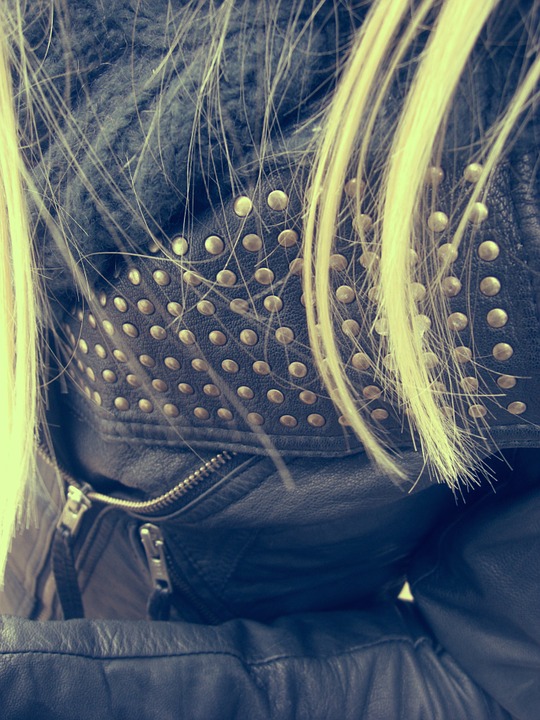Although it’s strong, durable and stylish, leather — like many common fabrics — is not waterproof. If you leave it exposed to moisture for a prolonged length of time, you may inadvertently damage it. You see, leather is a porous material that’s able to absorb moisture. Similar to a sponge, it absorbs even small, trace amounts of moisture. Over time, the accumulation of this moisture can cause leather jackets and other leather garments to develop mildew. If you’re concerned about this happening to your leather jacket, you should follow these tips to protect it from moisture damage.
Go Easy on Leather Conditioners
There’s nothing wrong with using a leather conditioner on your jacket, but you should do so sparingly. Leather conditioners like saddle soap are designed to moisturize leather and protect the fabric from dryness. Using too much or applying it too frequently, however, can damage leather. If you go overboard with a conditioner, your leather jacket may succumb to moisture damage. This is why it’s a good idea to condition leather jackets no more than once every few months. If your leather jacket doesn’t feel dry or rough, it probably doesn’t need conditioning. Cut back on conditioning your leather jacket to protect it from moisture damage.
Dry After Wearing in the Rain
You can still wear your leather jacket when it’s raining outside, but you should dry it shortly thereafter to protect it from moisture damage. Once you get indoors, wipe down the surface of your leather jacket will dry, clean towel to remove any excess water. You don’t have to necessarily toss your leather jacket in the dryer — this is actually bad because heat can damage leather — but you should wipe it dry after wearing it in the rain. Drying your leather jacket should only take a few minutes. Doing so, however, will preserve its appearance and integrity, allowing you to get more use out of it.
Carry an Umbrella
Of course, you can keep your leather jacket dry on rainy days by carrying an umbrella. When the skies turn dark and the rain begins to fall, pull open your umbrella until you reach shelter. An umbrella is an invaluable accessory that will keep you dry and comfortable during those otherwise not-so-dry days. To take advantage of this accessory, though, you’ll need to carry it when there’s rain in the forecast. If the local weather is calling for rain in or around your area, carry an umbrella, especially if you’re wearing a leather jacket.
Keep It Clean
Dirty leather jackets are more susceptible to moisture damage than clean leather jackets. When dirt, dust and other particulate matter becomes embedded on the surface of a leather jacket, it will slowly degrade the fabric while allowing more moisture to seep into it. Therefore, you should clean your leather jacket on a regular basis to protect it from moisture damage. There are special leather cleaning soaps and detergents that are perfect for leather jackets. They contain a proprietary blend of ingredients that are both safe and effective at cleaning leather. Alternatively, you can use a warm washcloth and a small amount of liquid laundry detergent to clean your leather jacket. Regardless of what product you use to clean your leather jacket, though, test it in a discreet area first to ensure that it doesn’t stain the fabric.
Don’t Spill Drinks On It
While easier said than done, you should try to avoid spilling drinking on your leather jacket. Whether it’s soda, tea, coffee or plain water, all beverages will saturate leather and contribute to mildew. Spilling a drink on your leather jacket won’t always lead to mildew. On the contrary, as long as you dry it up in a timely manner, it should revert back to its clean, original appearance. But it’s still a good idea to use caution when drinking beverages.
It’s not a bad idea to carry some paper towels or moist towelettes in your pockets when wearing a leather jacket. In the event that you spill a drink on your jacket, you can use them to immediately clean it and protect your jacket from moisture damage.
Check the Humidity
What’s the humidity level in your home? Most homeowners are familiar with the temperature in their home but few know the humidity level. Humidity is a metric used to measure the amount of moisture vapor in the air. If the humidity level in your home is too high, it means there’s a lot of moisture in the air. And with high levels of moisture vapor in the air, your leather jacket is more likely to succumb to moisture damage. Therefore, you should check the humidity level in your home and, if necessary, lower it to appropriate, safe level. Generally speaking, a normal humidity level is about 40% to 60%. If your home’s humidity level is higher than 60%, use a dehumidifier to extract some of the excess moisture vapor and create a lower humidity level.
Help! There’s Mildew On My Leather Jacket
If you’ve discovered mildew on your leather jacket, try not to panic. You can clean it using nothing more than a diluted vinegar. Take an empty plastic spray bottle and fill it with equal parts water and distilled white vinegar. Using this bottle, spray the diluted vinegar on the surface of your leather jacket, followed by wiping it with a clean washcloth. The diluted vinegar should make easy work of mildew, instantly restoring your jacket back to its original condition.
After cleaning the mildew off your leather jacket, you should try to identify why this happened in the first place. Otherwise, you may discover that the mildew has returned. Maybe you accidentally left your leather jacket sitting in a water-filled washing machine, or perhaps you condition it too frequently. Regardless, you’ll need to make the necessary changes to keep your leather jacket dry and protect it from moisture damage like mildew.


